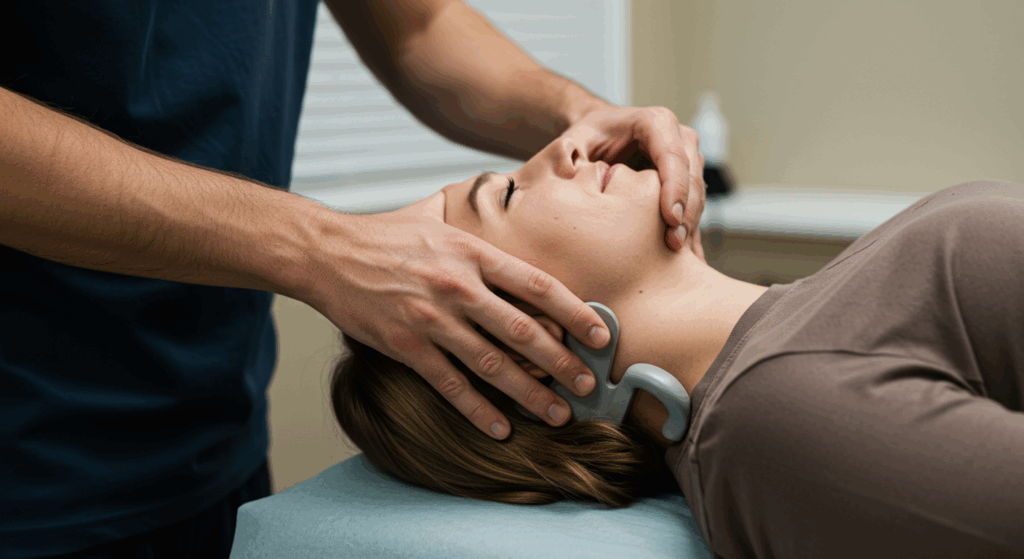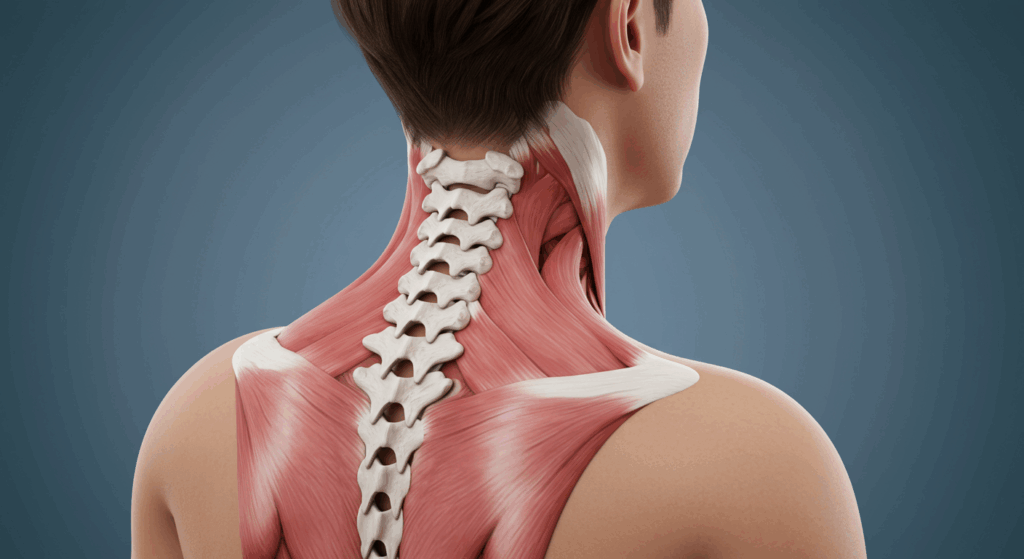Key Takeaways
- A cervical adjustment is a chiropractic technique that targets the neck to restore mobility, reduce pain, and improve function.
- It may relieve issues like neck stiffness, headaches, tech neck, and posture problems.
- While generally safe, it’s not recommended for people with certain medical conditions.
- Research shows chiropractic neck adjustments can be effective, but they should always be performed by a licensed chiropractor.
- At Back In Motion, every adjustment plan is customized for the patient’s age, condition, and goals.
If you’ve ever dealt with nagging neck pain, headaches that just won’t quit, or that tight, stuck feeling when you turn your head, you’ve probably wondered: Would a chiropractic neck adjustment help me?

A cervical adjustment—sometimes called a cervical manipulation—is a specialized technique chiropractors use to improve the motion of your neck and spine. For many people, it’s a game changer. But there’s also a lot of curiosity (and even concern) about whether it’s safe, effective, and right for everyone.
In this article, we’ll dive into the science, the benefits, the risks, and the real-world experiences with cervical adjustments. Our team at Back In Motion has helped athletes, office workers, seniors, and families alike find relief and better function through safe and targeted chiropractic care.
What Is a Cervical Adjustment?
A cervical adjustment is a chiropractic technique that focuses on the upper part of the spine—your neck. The cervical spine is made up of seven small vertebrae that support your head, allow motion, and protect vital nerves. When these vertebrae lose proper alignment, it can lead to pain, stiffness, headaches, and even nerve irritation.
During a cervical adjustment, a chiropractor applies a quick, precise force to specific joints in the neck. This isn’t about “cracking bones”—it’s about restoring motion and alignment so your body can function better.
At Back In Motion, we explain every step before adjusting so you feel comfortable and confident in your care.
Why People Seek Cervical Adjustments
Neck problems are more common than you think. Some of the most frequent reasons people come to us include:

- Tech neck from hours on phones and laptops
- Headaches and migraines linked to muscle tension and spinal misalignment
- Athletes recovering from sports injuries or looking to improve performance
- Seniors dealing with arthritis and limited neck motion

Office workers with posture-related pain from sitting all day
Parents sometimes bring children in for gentle, safe adjustments to help with posture and spinal development. Pregnant women also benefit from modified techniques that reduce pressure on the back and pelvis.
How Cervical Adjustments Work
Think of your spine like a chain. If one link is out of place, the whole chain moves differently. A cervical adjustment helps restore that balance.
Here’s what happens during a typical visit at Back In Motion:
- Consultation & Exam – We ask about symptoms, lifestyle, and medical history.
- Assessment – Gentle tests to see how your neck moves and where tension exists.
- Adjustment – Using either manual hands-on techniques or a specialized tool, we restore motion to restricted joints.
- Follow-up Plan – Exercises, stretches, and lifestyle tips to support long-term results.
Benefits of Cervical Adjustments
When performed by a licensed chiropractor, cervical adjustments can offer:
- Pain relief from neck stiffness and tension
- Improved range of motion, making everyday tasks easier
- Reduced headaches and migraines tied to muscle tension
- Better posture, especially for office workers and students
- Athletic recovery and performance, helping athletes train and compete at their best
- Improved nervous system function, since spinal health affects nerve communication
Patients often describe feeling “lighter,” “more mobile,” and “less tense” after care.
Risks, Safety, and Misconceptions
One of the biggest questions people have is: Is it safe?
The short answer: Yes, cervical adjustments are safe when performed by a trained chiropractor. Millions of people receive them every year without issue. Still, like any medical procedure, there are rare risks.
People who may not be good candidates include those with:
- Severe osteoporosis
- Blood clotting disorders
- Recent trauma or fractures
- Certain vascular conditions
You may have heard about strokes linked to neck manipulation. Research shows this risk is extremely rare, and often, underlying health issues—not the adjustment itself—are the real cause. At Back In Motion, we screen every patient carefully to ensure safety.
Patient Experience at Back In Motion
No two patients are the same. That’s why our team customizes every care plan. For example:
- Kids & teens: gentle adjustments for posture or sports injuries
- Young adults: relief from tech neck and stress-related tension
- Middle-aged adults: management of chronic pain or posture problems
- Seniors: gentle care for arthritis, balance, and mobility
- Pregnant women: modified techniques to ease pelvic and back discomfort
We also combine adjustments with stretching, muscle therapy, and posture training for lasting results.
Research and Evidence
Studies have shown that chiropractic neck adjustments can reduce pain and improve mobility in people with neck disorders. Some research also suggests benefits for headaches and posture correction.
A review published in Spine Journal found cervical manipulation to be effective for acute neck pain, especially when paired with exercise and lifestyle changes. The safety profile is strong, provided the treatment is performed by licensed professionals.
FAQs: Cervical Adjustments
How do I know if my neck needs adjusting?
If you experience stiffness, pain when turning your head, frequent headaches, or posture issues, you may benefit from a cervical adjustment. A chiropractor can determine this through an exam.
Is it safe for a chiropractor to adjust the neck?
Yes, when performed by a trained professional, cervical adjustments are generally safe. Chiropractors are trained to identify when adjustments are appropriate—or when other care is needed.
Who should not get a chiropractic adjustment?
Those with fractures, severe osteoporosis, certain vascular conditions, or recent major trauma should avoid neck adjustments. Your chiropractor will screen for these conditions.
How long after neck manipulation can a stroke occur?
Stroke after a chiropractic adjustment is extremely rare. Research shows no clear evidence that adjustments directly cause stroke. Most cases are linked to pre-existing conditions, not the adjustment itself.
Conclusion
A cervical adjustment isn’t just about cracking your neck—it’s about restoring balance, relieving pain, and helping your body move the way it was designed to.
At Back In Motion, we believe in combining science, safety, and personalized care. Whether you’re an athlete, an office worker, a parent, or a senior, our team is here to guide you through safe, effective chiropractic care tailored to your needs.
If neck pain, headaches, or posture problems are holding you back, don’t wait—book your consultation with Back In Motion today and experience the difference a cervical adjustment can make.
